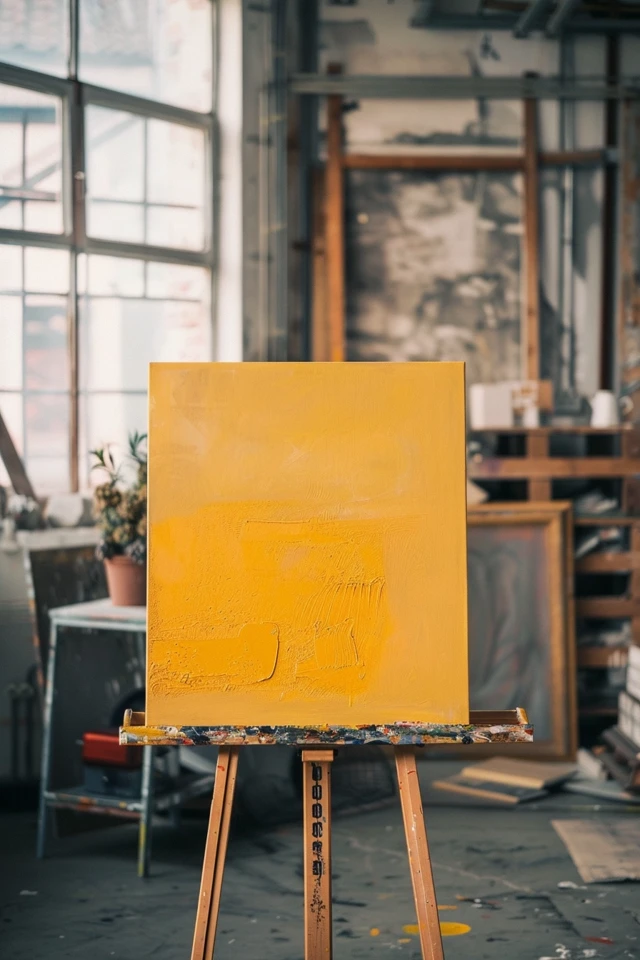Hey there! Are you a fan of the warm and vibrant shade of mustard? If you’ve ever wondered how to create mustard color at home, you’re in the right place! In this guide, I’ll show you a simple and fun DIY method to achieve that mustard hue you’ve been dreaming of.
Creating mustard color is easier than you might think. By mixing different colors together, you can achieve the perfect mustard shade that will add a touch of warmth to any project. There are various color combinations suggested by experts, and I’m here to share them with you.
One method involves mixing equal parts of brown and yellow. This combination creates a beautiful balance between the rich earthy tones of brown and the bright vibrancy of yellow. Another approach is to combine red, blue, and yellow, allowing you to customize the undertones and intensities to suit your preferences.
To fine-tune the shade of mustard, you can add additional colors such as black, red, blue, or white. These secondary colors can help you achieve the exact tint and tone you desire. It’s important to note that the choice of mustard seeds also plays a role in the final color. Whether you use white, brown, or black mustard seeds, each will contribute to the overall shade.

Key Takeaways:
- Creating mustard color is a simple and rewarding DIY project.
- You can mix equal parts of brown and yellow or combine red, blue, and yellow to create mustard color.
- Adjustments can be made by adding additional colors like black, red, blue, or white.
- Choosing different types of mustard seeds can impact the final shade of mustard color.
- Experiment and have fun to achieve the perfect mustard hue for your projects.
Now that you know how to create mustard color on your own, the possibilities are endless! Whether you’re looking to add a pop of mustard to your artwork, home décor, or fashion choices, this DIY guide has got you covered. Get ready to embrace the warm and vibrant world of mustard!
The Science of Mustard Making
When it comes to making mustard at home, there is a fascinating science behind the process. It all begins with a chemical reaction between the mustard seeds and a liquid, resulting in the distinct flavor and texture we love. Whether you’re looking to create your own homemade mustard recipe or simply curious about how to make mustard, understanding the science behind it can enhance your culinary journey.
To start, mustard seeds are a key ingredient in mustard making. These small seeds pack a punch and are responsible for the mustard’s signature spiciness. To unlock their full flavor potential, mustard seeds are commonly ground into a fine powder using a spice grinder or food processor. The finer the powder, the smoother and more consistent the mustard will be.
When it comes to choosing the liquid component for your DIY mustard, both cold and warm liquids can be used. The choice of liquid can affect the level of spiciness and overall taste. Many homemade mustard recipes call for vinegar, which not only adds tanginess but also acts as a natural preservative, extending the shelf life of your homemade creation.
No mustard recipe is complete without the addition of salt. Salt not only enhances the taste of the mustard but also acts as a preservative, helping to maintain its freshness over time. The amount of salt added can be adjusted to suit your personal preference, ensuring a perfectly balanced flavor profile.
One important step in homemade mustard making is allowing the mixture to mellow for at least 24 hours. This resting period allows the flavors to meld together and reduces any potential bitterness. After this resting period, your mustard is ready to be enjoyed and can be stored in the refrigerator for several months, providing you with a delicious condiment for a variety of dishes.
Remember, making your own mustard is a creative process. Feel free to experiment with different mustard seeds, spice combinations, and even additional flavorings to create your own unique DIY mustard. The possibilities are endless, and the result is a flavorful condiment that you can confidently call your own.
So, whether you’re a mustard aficionado looking to expand your homemade mustard recipe collection or a culinary enthusiast seeking a new DIY project, learning the science behind mustard making opens up a world of creative possibilities.

Conclusion
Creating mustard color at home is a simple and rewarding DIY project. With a few tips and tricks, anyone can achieve the perfect mustard shade. By following the suggested color combinations of mixing brown and yellow or red, blue, and yellow, you can create a warm and vibrant mustard color.
Customization is key when it comes to making mustard from scratch. Adjusting the tone to personal preference allows you to create a mustard shade that suits your style. Additionally, experimenting with different types of mustard seeds and spices can result in unique and delicious homemade mustards.
Whether you’re looking to add a pop of mustard color to your home decor or create your own flavorful mustard condiments, the possibilities are endless with DIY mustard. So why not unleash your creativity and embark on a mustard-making adventure? Get ready to experience the joy of mustard color and flavor like never before.


